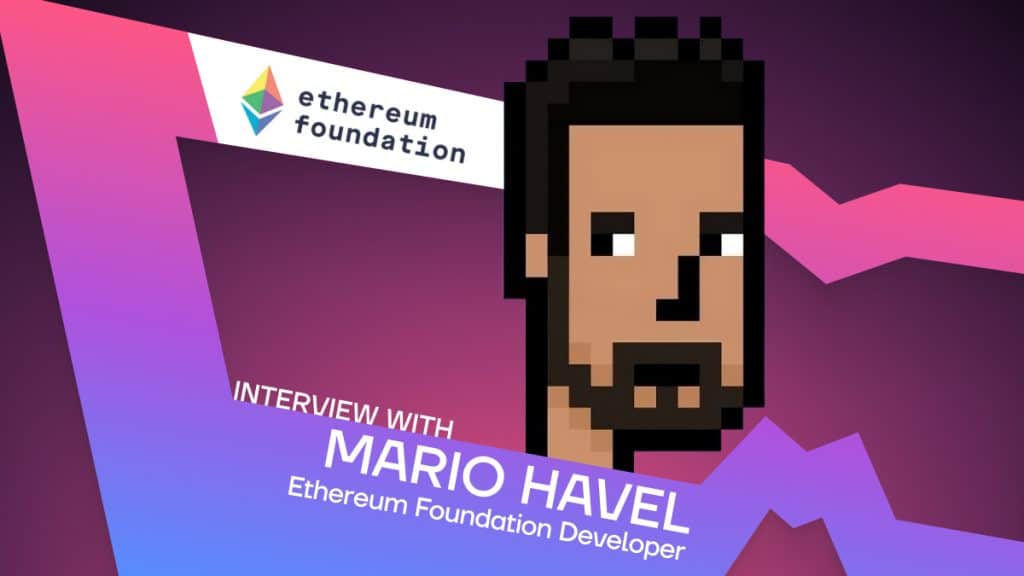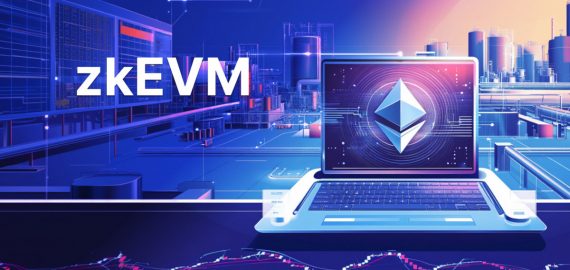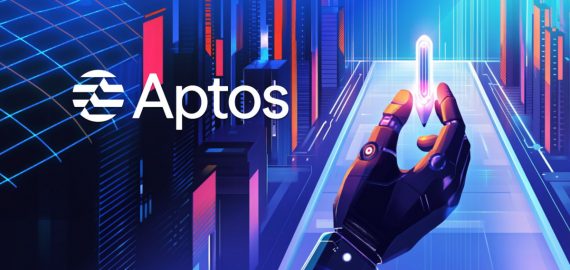Ethereum Foundation Developer Mario Havel Discusses Merge, Shapella, the Future of ETH


In Brief
Mario Havel, a developer from the Ethereum Foundation, discussed the current state of Ethereum, along with challenges and opportunities for the network.
As part of the protocol support team, Havel plays a crucial role in supporting Ethereum’s development. He highlighted the progress made in the Ethereum ecosystem, including the successful testing and coordination of the Merge.
The Ethereum community, particularly the Protocol Guild, encourages developers to actively contribute to the blockchain’s development.
The Ethereum Protocol Fellowship also provides a pathway for developers to contribute through open repositories, embracing permissionless contributions.

At ETHBarcelona 2023, Metaverse Post spoke with Mario Havel from Protocol Support of the Ethereum Foundation. During the interview, Havel discussed the current and future state of Ethereum, as well as the challenges and opportunities that the network faces.
Ethereum is an open-source blockchain network that powers ETH, the second-largest cryptocurrency by market value. Ethereum Foundation (EF) is a non-profit organization that supports the development and innovation of Ethereum and related technologies. It’s not a company or a leader of Ethereum but one of the many contributors to the ecosystem. Some of the initiatives that the Ethereum Foundation runs are: the Ecosystem Support Program, which provides financial and non-financial support to Ethereum projects and entities; Devcon, which is the annual conference for Ethereum developers, researchers, and enthusiasts; and the Fellowship Program, which aims to make core development more accessible and less intimidating.
Havel plays an integral role in supporting Ethereum’s development, particularly in establishing the protocol support team alongside other passionate individuals. He entered the crypto world in 2015-2016.
“I was fascinated by the intersection of technology and economics, and I discovered a local Hackerspace called Paralelni Polis that introduced me to the concept of crypto anarchy and the technologies behind it, such as Bitcoin and Ethereum,” he said.
In 2018, Havel became more involved in the theory aspect of crypto, as he helped to open a local Hackerspace and funded it using MakerDAO, which was one of the first practical applications of Ethereum that he encountered. In early 2020, he began working at Ethereum Foundation as a technical researcher and coordinator.
“Two years ago, we formed the protocol support team, which started as a random idea but turned out to be a great team with Tim Beiko, Trent Van Epps, and others. We are now working on supporting the Ethereum core and facilitating its development.”
Ethereum Becoming a Stronger Ecosystem
Havel is involved in various kinds of research with EF. One of his main focuses was the Merge, which he helped to test and coordinate. He also created a website that estimated the time of the Merge.
Havel noted that many people from different communities, including Bitcoiners, who were initially skeptical of Ethereum’s proof-of-work approach, became enthusiastic about the Merge.
“From a developer’s perspective, it was a significant achievement, and for some, contributing to the Merge felt like a way to address global warming concerns by reducing energy consumption. The Ethereum community is generally thrilled with the results, as the Merge has brought improvements such as more stable blocks. Overall, Ethereum has made significant progress towards its goals.”
Besides technical research, Havel also did some community work and co-organized the Ethereum Protocol Fellowship with colleague Josh Davis. The fellowship helps aspiring core developers learn about the protocol, work on projects, connect with mentors, and receive stipends.
“We are currently starting the next cohort, which is very exciting. Another project I recently worked on was Ephemery Testnet, a new testnet that resets to Genesis periodically to avoid long-term issues. This testnet is now running in some state and we have created the specification for it,” Havel said.
The reset helps delete unnecessary data and optimize the system. Havel and his colleagues have been actively involved in working on this project and have also used it for Shappella testing. In a week-long event, they collaborated on assembling components for Shappella and Dencun, the upcoming fork. Currently, they are primarily assisting with testing, benchmarks, and providing support for this project.
Ethereum´s latest proposal, which was disclosed in June, seeks to increase the staking limit from 32 ETH to over 2,000 ETH. Havel highlighted that this proposal has garnered a lot of attention within the community, as popular ideas tend to receive prioritization. However, this change does not imply a requirement for more ETH to stake, as the limit would still be set at 32 ETH. The benefit lies in allowing users who stake more to run a single instance of the software, reducing network overhead and bandwidth requirements. Moreover, Havel confirmed that the proposal is currently not considered to be included in the upcoming upgrade.
This enhancement aims to make the network more accessible to users with lower bandwidth capabilities and facilitates their participation in consensus committees. Havel believes this is a positive step towards enhancing the network’s resilience over time.
He discussed a plan to make Ethereum faster and cheaper. It involves dank sharding and rollups, two techniques to handle data differently. Danksharding splits data into smaller pieces and stores them on the Beacon Chain, not Ethereum. Rollups use a function to access data, but it is expensive. A new solution, called Proto-Danksharding, replaces the function with a special transaction that carries data as a blob, which is stored temporarily on the Beacon Chain and verified by rollups. This way, Ethereum avoids storing useless data and saves resources. Moreover, it improves scalability and lowers costs for layer two, making Ethereum more user-friendly with layer two solutions.
“There are many exciting things to look forward to in Ethereum. It’s like an infinite game, which you play for playing, not for winning, or an infinite garden where you constantly trim hedges to make it beautiful and discover new parts of it. While there is no specific end goal, there is a desire for some form of ossification in the coming years.”
However, before that, there are several goals, Havel explains. Currently, the focus is on the EIP-4844 upgrade, but the roadmap is ever-evolving. There are many exciting developments, such as the transition from Merkle Patricia tree to Verkle (vector commitment Merkle trees), history expiry to allow easier client usage, privacy solutions, censorship resistance, proposer/builder separation, making Ethereum more ZK-friendly, and exploring quantum resistance.
The Ethereum Ecosystem: A Constant Work in Progress
The Ethereum community is vibrant and passionate about building a better future on the blockchain. From developers and researchers to users and enthusiasts, the team is constantly working to improve the network and its ecosystem. Havel shared how the community is working together.
The AllCoreDevs call is one way that the Ethereum community is building ETH. This regular meeting brings together representatives from various teams within the Ethereum community to discuss current topics and make decisions. The calls are open to the public, documented on platforms like YouTube, and allow anyone interested to contribute their opinions.
Another way that the Ethereum community is building the network is through its ongoing development process. The Ethereum ecosystem is constantly being updated and improved, thanks to the work of the many developers who contribute to its code. These developers are from all over the world, so the diversity of skills and perspectives is essential to the continued development of the Ethereum network. Though sometimes, the consensus can be challenging to reach due to differing viewpoints.
Developers are independent individuals working on their respective parts, and coordination can require multiple discussions. The coordination work is done mostly in the open, with the Ethereum/PM GitHub repository being a central place to track current calls and meetings. Tim Beiko, one of the developers mentioned earlier, leads the core developer calls and ensures that discussions stay on topic.
Havel mentioned the merge manual, a document created by his colleague Trent that collected testimonials and counted how many people contributed to the merge. He estimated that there were more than 200 contributors from 20 different teams, working full-time or part-time, from all over the world.
“It’s beautiful to see this collaboration and coordination completely distributed people from all around the world towards the same goal: building huge open source project together and well succeeding in it.”
Ethereum Community Encourages Developers to Keep Building the Decentralized Future
One prominent group within this ecosystem is the Protocol Guild, a curated list of dedicated individuals who actively contribute to Ethereum’s advancement over a significant period, typically half a year or more. While the list started with 90 members, it has grown to around 142, showcasing the increasing interest in the blockchain’s development.
Becoming a member of the Protocol Guild involves recognition by the guild itself. Interested developers can engage in public discussions, such as on Discord, to showcase their contributions. Although the governance process is currently off-chain, there are plans to update it in version two, making it more transparent and on-chain.
When it comes to the Protocol Guild and the developers working on Ethereum, Havel clarified that not all developers are automatically part of it. “It’s a curated list, with membership decided by the members themselves. Individuals who actively and consistently contribute to Ethereum over a significant period, at least half a year, can be considered for membership.”
In addition, the Ethereum Protocol Fellowship provides a pathway for developers to contribute to Ethereum’s development. The GitHub organization Ethereum Protocol Fellowship hosts repositories open to the public, encouraging permissionless contributions. Here, talent and meaningful contributions from any individual are recognized and valued.”
“You can find all the repositories and all the work which is open to the public, and you can get inspired by that. You can contribute there permissionless. It is called the Open Permissionless Program. We don’t ask for any registration; you can just come in and start contributing because it mimics the experience of the whole career development. You can just come to Ethereum, as well and look into the current problems and start contributing. Nobody stops you or anything. You just need to be able to dive into it,” he shared.
The Ethereum community invites developers to explore career development opportunities and to actively participate in building a decentralized future. If you have the passion and dedication, nothing is stopping you from diving in and making a meaningful impact on Ethereum’s growth, Havel said.
Read more about Ethereum:
- How has Ethereum’s Sept. 15 Merge impacted the blockchain so far?
- September 15 Ethereum Merge looms, hopes and fears mount
- Etherscan Has Integrated ChatGPT to Analyze Ethereum Source Code
- Vitalik Buterin Calls Against Overloading the Ethereum Consensus Algorithm
Disclaimer
In line with the Trust Project guidelines, please note that the information provided on this page is not intended to be and should not be interpreted as legal, tax, investment, financial, or any other form of advice. It is important to only invest what you can afford to lose and to seek independent financial advice if you have any doubts. For further information, we suggest referring to the terms and conditions as well as the help and support pages provided by the issuer or advertiser. MetaversePost is committed to accurate, unbiased reporting, but market conditions are subject to change without notice.
About The Author
Agne is a journalist who covers the latest trends and developments in the metaverse, AI, and Web3 industries for the Metaverse Post. Her passion for storytelling has led her to conduct numerous interviews with experts in these fields, always seeking to uncover exciting and engaging stories. Agne holds a Bachelor’s degree in literature and has an extensive background in writing about a wide range of topics including travel, art, and culture. She has also volunteered as an editor for the animal rights organization, where she helped raise awareness about animal welfare issues. Contact her on [email protected].
More articles

Agne is a journalist who covers the latest trends and developments in the metaverse, AI, and Web3 industries for the Metaverse Post. Her passion for storytelling has led her to conduct numerous interviews with experts in these fields, always seeking to uncover exciting and engaging stories. Agne holds a Bachelor’s degree in literature and has an extensive background in writing about a wide range of topics including travel, art, and culture. She has also volunteered as an editor for the animal rights organization, where she helped raise awareness about animal welfare issues. Contact her on [email protected].

















































